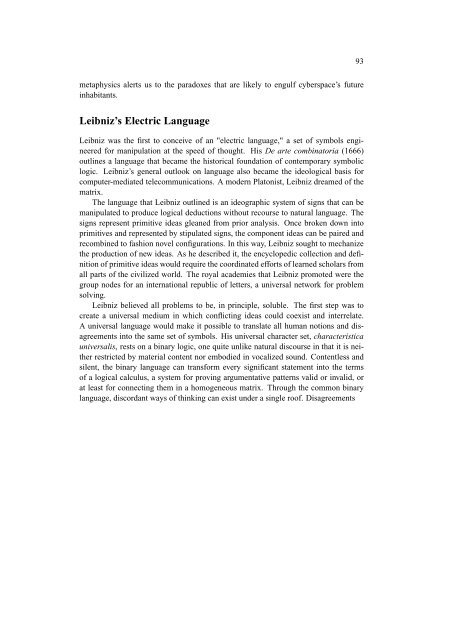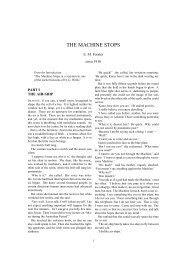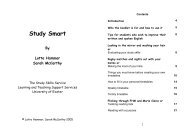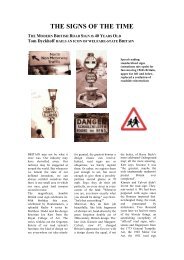PDF - The Metaphysics of Virtual Reality - University of Exeter
PDF - The Metaphysics of Virtual Reality - University of Exeter
PDF - The Metaphysics of Virtual Reality - University of Exeter
You also want an ePaper? Increase the reach of your titles
YUMPU automatically turns print PDFs into web optimized ePapers that Google loves.
metaphysics alerts us to the paradoxes that are likely to engulf cyberspace’s future<br />
inhabitants.<br />
Leibniz’s Electric Language<br />
Leibniz was the first to conceive <strong>of</strong> an "electric language," a set <strong>of</strong> symbols engineered<br />
for manipulation at the speed <strong>of</strong> thought. His De arte combinatoria (1666)<br />
outlines a language that became the historical foundation <strong>of</strong> contemporary symbolic<br />
logic. Leibniz’s general outlook on language also became the ideological basis for<br />
computer-mediated telecommunications. A modern Platonist, Leibniz dreamed <strong>of</strong> the<br />
matrix.<br />
<strong>The</strong> language that Leibniz outlined is an ideographic system <strong>of</strong> signs that can be<br />
manipulated to produce logical deductions without recourse to natural language. <strong>The</strong><br />
signs represent primitive ideas gleaned from prior analysis. Once broken down into<br />
primitives and represented by stipulated signs, the component ideas can be paired and<br />
recombined to fashion novel configurations. In this way, Leibniz sought to mechanize<br />
the production <strong>of</strong> new ideas. As he described it, the encyclopedic collection and definition<br />
<strong>of</strong> primitive ideas would require the coordinated efforts <strong>of</strong> learned scholars from<br />
all parts <strong>of</strong> the civilized world. <strong>The</strong> royal academies that Leibniz promoted were the<br />
group nodes for an international republic <strong>of</strong> letters, a universal network for problem<br />
solving.<br />
Leibniz believed all problems to be, in principle, soluble. <strong>The</strong> first step was to<br />
create a universal medium in which conflicting ideas could coexist and interrelate.<br />
A universal language would make it possible to translate all human notions and disagreements<br />
into the same set <strong>of</strong> symbols. His universal character set, characteristica<br />
universalis, rests on a binary logic, one quite unlike natural discourse in that it is neither<br />
restricted by material content nor embodied in vocalized sound. Contentless and<br />
silent, the binary language can transform every significant statement into the terms<br />
<strong>of</strong> a logical calculus, a system for proving argumentative patterns valid or invalid, or<br />
at least for connecting them in a homogeneous matrix. Through the common binary<br />
language, discordant ways <strong>of</strong> thinking can exist under a single ro<strong>of</strong>. Disagreements<br />
93
















